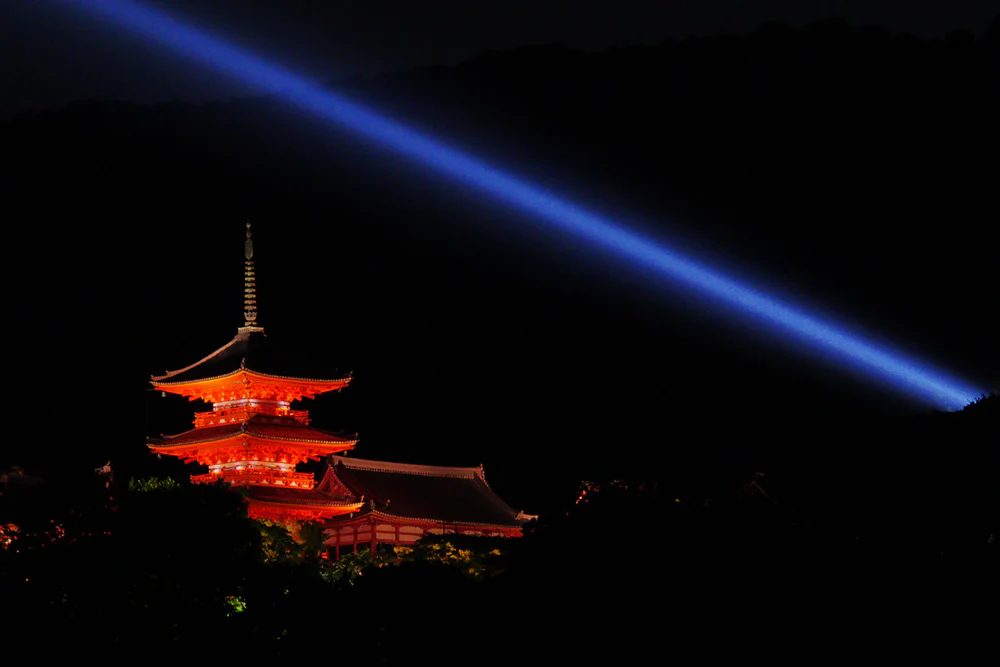
Einführung von Furoshiki
Furoshiki unterscheidet sich für ihre Umweltfreundlichkeit und Vielseitigkeit und verwendet verschiedene Techniken zum Falten und Knoten, sodass ein einzelnes Stück Stoff in zahlreiche Formen verwandelt werden kann-von einfachen Wrappern bis hin zu anspruchsvollen Tragetaschen. Zu den häufig verwendeten Materialien gehören Seiden, Baumwolle und Rayon, die jeweils für Haltbarkeit und ästhetische Anziehungskraft ausgewählt wurden. Die charakteristische quadratische Form des Stoffes zusammen mit der Vielfalt seiner Entwürfe, von traditionellen Motiven bis hin zu zeitgenössischen Mustern, stellt eine Verschmelzung von Nützlichkeit und Kunst dar, die verschiedene Aspekte des japanischen Lebens seit Generationen durchdrungen hat.
Die Reiz von Kiyomizu Ware liegt in seinen unverwechselbaren Techniken, Auswahlmaterialien und der beispiellosen Handwerkskunst, die in jedes Stück einfließt. Die Handwerker nutzen lokaler Ton, der für seine überlegene Qualität bekannt ist, und setzen traditionelle Feuermethoden ein, die zur bemerkenswerten Haltbarkeit und der einzigartigen Schönheit der Keramik beitragen. Kiyomizu Ware zeichnet sich durch seine lebendigen Glasuren und aufwändigen, handbemalten Motive aus, die sich von der natürlichen Schönheit von Kyotos Landschaften inspirieren lassen. Diese Elemente zeigen das Engagement des Handwerkers für Details und ihre tiefgreifende Verbindung zur Natur und machen jedes Stück zum Spiegelbild der Vision des Künstlers und des reichen kulturellen Erbes von Kyoto.
Geographische Eigenschaft
- Stadt und Präfektur : Kyoto, Präfektur Kyoto
- Bevölkerung : Ca. 1,46 Millionen
- Spezielle Produkte : Kyoto ist bekannt für seinen Matcha (grüner Tee), Yuzen -Färbegtextilien und Kimonos.
- Einführung : Kyoto, einst die Hauptstadt Japans, bleibt eine Stadt, die von Tradition und Geschichte durchdrungen ist. Es wird bekannt für seine klassischen buddhistischen Tempel sowie Gärten, kaiserliche Paläste, Shinto-Schreine und traditionelle Holzhäuser und wird auch für seine ausführliche Erhaltung des alten Handwerks wie Furoshiki gefeiert.

Geschichte von Furoshiki
Ursprünge in der Antike
Die Wurzeln von Furoshiki können auf die Nara -Zeit zurückgeführt werden, die hauptsächlich in Tempeln verwendet wird, um wertvolle Gegenstände umwickelt und geschützt zu halten. Der Nutzen und die Einfachheit des Stoffes haben es von verschiedenen Schichten der japanischen Gesellschaft im Laufe der Zeit übernommen.

Kulturelle Expansion
Während der Edo -Zeit dröhnte die Verwendung von Furoshiki mit dem Aufstieg öffentlicher Badehäuser. Seine Rolle in der Gesellschaft wurde von einem praktischen Gegenstand zu einem Statussymbol erweitert, bei dem der Stoff und seine Entwürfe den eigenen sozialen Ansehen und den eigenen Geschmack widerspiegeln konnten.

Sich durch die Zeit entwickeln
Während die Verwendung von Furoshiki in der modernen Zeit mit dem Aufkommen von Taschen und anderen modernen Verpackungsmethoden ein Niedergang ausgesetzt war, haben die jüngsten Trends zur Nachhaltigkeit ein erneutes Interesse an dieser umweltfreundlichen und ästhetisch vielseitigen Tradition geweckt.

Merkmale von Furoshiki
1. Ästhetische Vielseitigkeit
Furoshiki zeigt eine bemerkenswerte ästhetische Flexibilität und verwandelt sich nahtlos von einer bescheidenen Lebensmittel tte zu einer anspruchsvollen Geschenkverpackung. Diese Anpassungsfähigkeit wird durch die vielfältige Auswahl der verfügbaren Materialien und Konstruktionen angereichert, die ein Spektrum an Verwendungen und persönlichen Geschmacksrichtungen entsprechen. Egal, ob Sie klassische Motive einsetzen oder zeitgenössische Stile umarmen, Furoshiki Bridges Tradition und Moderne brütet und macht es zu einer vielseitigen Wahl für die praktische und ästhetische Attraktivität.

2. nachhaltige Raffinesse
Furoshiki bietet eine nachhaltige Alternative zu Einwegverpackungen und Einweg-Taschen. Mithilfe von Techniken, die keine zusätzlichen Befestigungselemente oder Klebstoffe erfordern, reduziert dieses Handwerk nicht nur Abfälle, sondern setzt Benutzer auch über die Werte von Wiederverwendbarkeit und Einfallsreichtum auf. Die Nachhaltigkeit von Furoshiki macht es zu einer überzeugenden Wahl für umweltbewusste Menschen weltweit.

Moderne Anwendungen
Heute schwingt Furoshiki mit globalen Trends in Bezug auf Nachhaltigkeit und Minimalismus mit. Die Einführung in verschiedenen Teilen der Welt für alles, vom täglichen Einkauf bis hin zu Geschenkverpackungen, zeigt eine wachsende Wertschätzung für Praktiken, die Form, Funktion und Umweltverantwortung im Alltag kombinieren.

